
9 minute read
Braking
As Maggie Thatcher once said: "No, No, No!" Copper grease's anti-seize properties do not mean that it is a suitable lubricant and its use can interfere with wheel speed sensor signals. Slathering any grease around in this manner is also unwise.
Stopping mistakes
While total brake failure is caused rarely by technician error, Rob Marshall learns that mistakes still happen but at least they are easily rectified
We all realise that the motorcar's rate of technological change is increasing. While some parts perform the same basic task and work in the same way for eons, subtle changes mean that fitment techniques must also evolve. While it is easy for some workshops to be left behind, or even a minority of technicians reluctant to change time-served techniques, this does not mean that the aftermarket is stacked full of stubborn mules. The opposite is true. However, everyday work pressures can make it difficult to stop and reflect on how bread-and-butter repairs to braking systems can be improved and why old procedures might not be relevant anymore. As always, AT's intent is not to beat hard-working technicians with their tubs of copper grease but we are appreciative to the OE-quality braking brands whom we contacted for advice on how techs can enhance their brake repair procedures.
Testing, testing...
is down to water absorption. This reduces the fluid's boiling point and, therefore, the braking systems' maximum operating temperature.
We have witnessed technicians measure the fluid's boiling point with a 'pen tester'. While the intention is honourable, such tools that rely on passing a small electric current through the fluid tend not to be especially accurate. Apec Braking advises that:
"The only accurate way to test brake fluid is to boil it, using a boil tester."
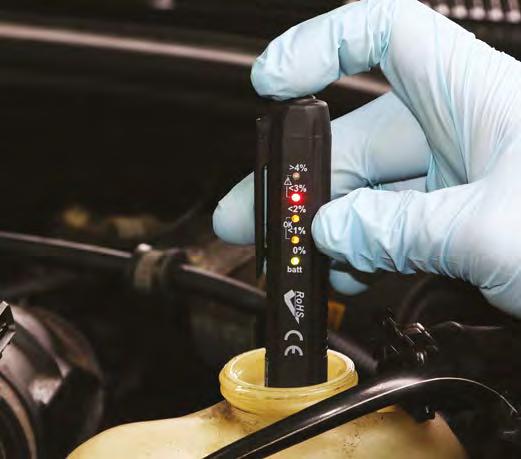
The main error pointed out to us is technicians rounding-off brake pipe unions, while attempting to remove a flexible hose. While MOT and servicing checks include inspections for perishing, cuts, leakage and fouling, it can he harder to assess that the hose remains suitably flexible. Aged hoses can also collapse internally, inhibiting the return flow of brake fluid, fooling the technician into thinking that a caliper is seized. Should slackening a bleed screw relieve the pent-up pressure and restore easy hub rotation, blame the flexible hose.
Interestingly, First Line reminds us that brake hoses possess a defined lifetime and best practice dictates that they should be replaced as a car set every five years. It also emphasises the importance of not overtightening the connections and reminds technicians to heed the correct torque setting.

Fluid renewal
While you can flush old fluid through the system by using the old-fashioned method of depressing the brake pedal repeatedly, you risk damaging the master cylinder seals, especially on an older car. A pressure bleeder tends to be the preferred hardware and available versions can be powered via an airline but those that utilise a hand pump can offer greater flexibility.
While Apec Braking advises that you should check if you require diagnostic equipment to operate the valves within the ABS pump, DRiV's Ferodo brand highlights the importance of working in a set order, starting with the brake caliper furthest from the master cylinder.
While friction brakes on high voltage hybrid and battery electric vehicles do not differ significantly from those fitted to conventional vehicles, the brake pedal tends not to be connected directly to the master cylinder. HEVRA advises:
"While the brake fluid on some electric and hybrid vehicles can be bled in the normal way, assuming they are all alike is a recipe for potential problems. In the best-case scenario, the fluid will not come through. However, in another situation, fluid may come out from the bleed nipples, and the pedal feels firm, but a dangerous airlock still exists in the system. In normal driving, with the motor doing most of the braking, this problem might not show up on a road test."
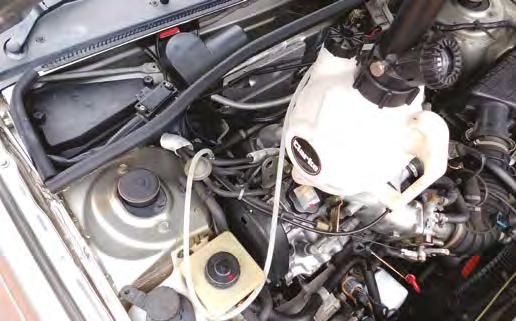
While the bottom hose would have passed an MOT Test, it has lost its flexibility
Brake pads
Most installation errors result in less than perfect operation that may not be noticed by the driver immediately. Yet, noise and judder are typical issues that may undermine faith in your workshop.
Apec Braking reminds us that successful pad installation starts with proper removal and preparation. It advises that technicians take extra time to remove and clean corrosion and debris from the pad carrier points, otherwise, the pads may not move freely and the resultant slight binding courts uneven wear characteristics, noise and excessive heat generation. The disc can also wear unevenly, promoting Disc Thickness Variation (DTV). Never modify a brake pad to fit a corroded carrier; even filing it slightly removes its anti-corrosion protection, risking future problems.
A common mistake results from not knowing that a handed replacement brake pad should be fitted to either the inside,
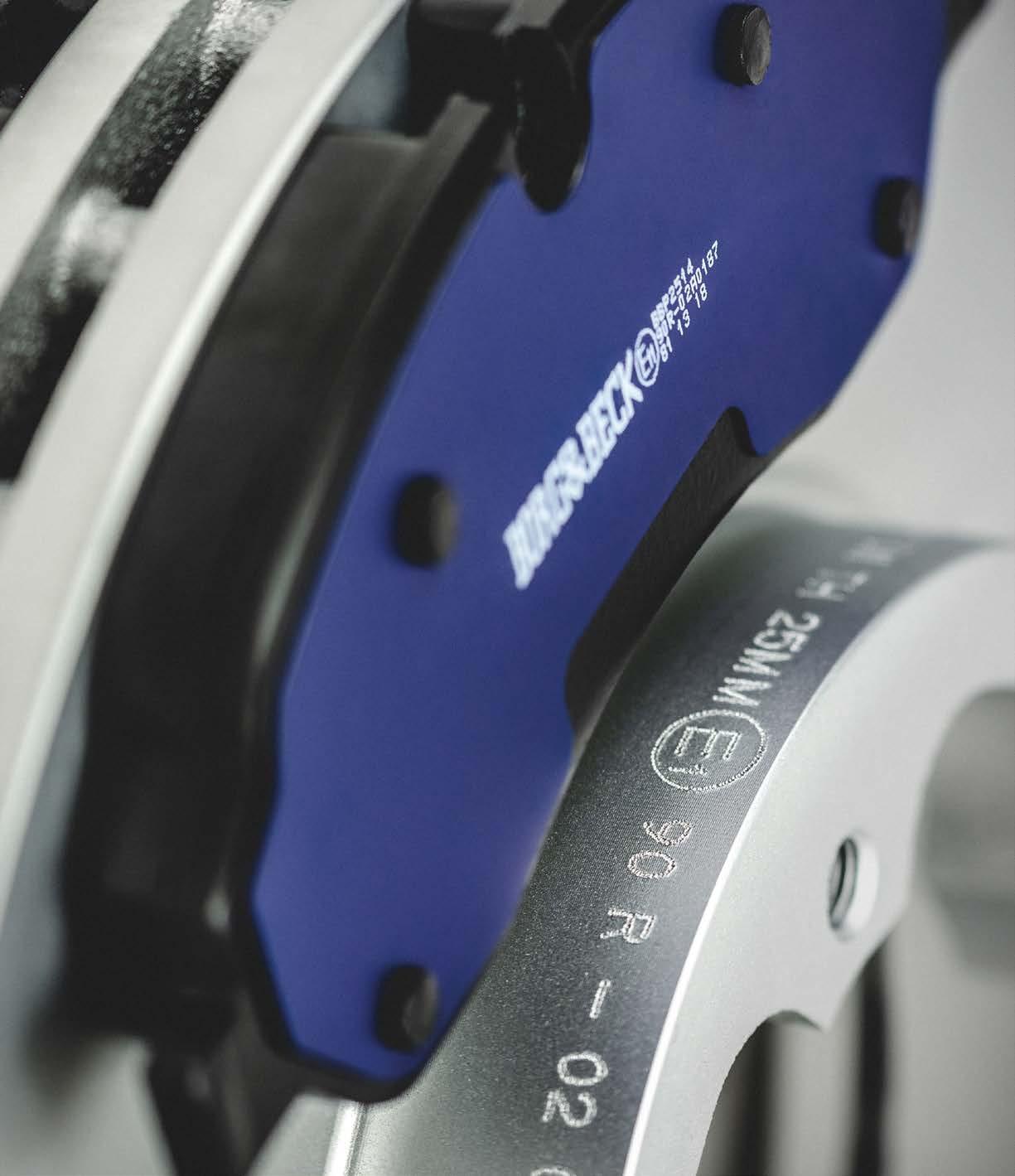

Friction materials have become ever more complex, demanding extra fitting care
or outer side, of the caliper. An alternative is not installing chamfered pad friction surfaces in their correct positions in relation to the disc. This error compromises the pads' noisereduction abilities. Even so, TRW says,
"One of the biggest causes of brake squeal is poor installation and the overuse of grease, especially now that all 'good' brake pads have proper noise reduction shims. Applying grease to the shim stops it working properly, which results in highpitched noises. The use of grease is old school and dates back to when shims were not fitted, or the technology wasn’t what it is today."
This does not mean that the use of grease is redundant, however. First Line advises technicians to use greases sparingly and to:
"grease only the metal-to-metal contact points with a suitable high melting point grease. Avoid using copper grease on the back of brake pads, as this can lead to serious contamination."
Borg and Beck brake pads, for example, feature multi-layered NVH reducing shims, which must not be separated from the pads' rear. Coating them with copper grease attacks the rubber content, rendering the shim ineffective.
After replacing the pads, the new friction material requires time to mate with the disc effectively. While all receptionists should advise the customer to avoid hard braking wherever possible during this 'bedding-in' process, so the rapid heat build cannot
cause thermal shock, First Line advises that the process can take up to 400 miles. HEVRA adds that, because BEVs tend to use their friction brakes infrequently, the bedding-in process can take thousands of miles.
Brake Discs
Apec Braking dispels a common myth among technicians: you cannot tell by eye whether a brake disc is sitting flush, or not. This means that closing one eye and squinting at a spinning disc is no substitute for a dial indicator, which should not record more than a 0.08mm variation. The company adds that failure to clean the hub thoroughly, prior to fitting a new disc, can cause excessive run-out and technicians tend to blame the disc incorrectly, after they detect judder during the road test.
While DTV can result from technician error, drivers can also be to blame. Aside from ignoring bedding-in instructions, keeping the pedal applied once the car has come to a standstill after heavy braking can cause an imprint of the pad to be visible on the disc – a tip that may be useful, if a customer tries to blame the garage unfairly for brake judder. Ferodo asks technicians to consider that, as seized caliper pistons and sliders can cause uneven forces to be applied to each side of the disc, the irregular wear will promote DTV. Therefore, it is worth checking that such parts, sliders especially, move freely and that their protective gaiters are undamaged before fitting the pads.

Ferodo reminds us that tightening the positioning screw excessively can even distort the hub to disc contact surface
Brake shoes
It is interesting to note that several electric car models feature rear drums, proving that the older technology is refusing to die. In many ways, drum brakes make total sense on the rear of EVs, especially because they are less prone to corrosion-induced binding, unlike their disc brake counterparts.
Perhaps the biggest mistake that technicians make (or, possibly, a garage's stock ordering system) is being unfamiliar with product ranges that are designed to reduce book times and enhance profitability. DRiV highlights Ferodo's drum brake Maxi Kits that comprise the various parts that have been pre-
First Line also highlights an interesting point about parts quality because some "less scrupulous suppliers" in today's price-driven market are offering discs and drums, especially, made from less metal. While this makes them lighter, they will be thinner, less robust and will reduce braking performance, due mainly to their compromised heat dissipation qualities.
Brake drums: Facing a bright future
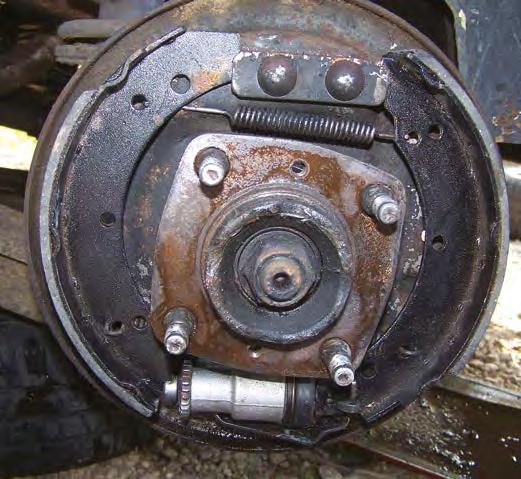
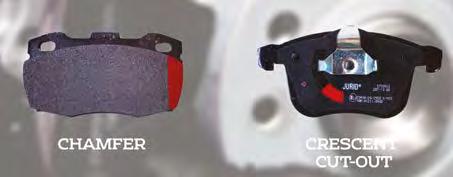
TOP 5 ERRORS CAUSING NOISY BRAKES
With noise being the most common brake-related complaint, JURID advises that the following mistakes will promote noise: 1. Not cleaning new discs correctly, prior to fitment.
Coated discs do not require their anti-corrosion paint removing, incidentally 2. When fitting new pads to used discs, contaminating the disc surface accidentally 3. Lubricating neither calipers, nor sliders, correctly. 4. Contaminating brake pad friction surfaces with oil, brake fluid etc. 5. Not observing reassembly instructions, especially regarding the correct positioning of directional pads.
Brakes for All Makes
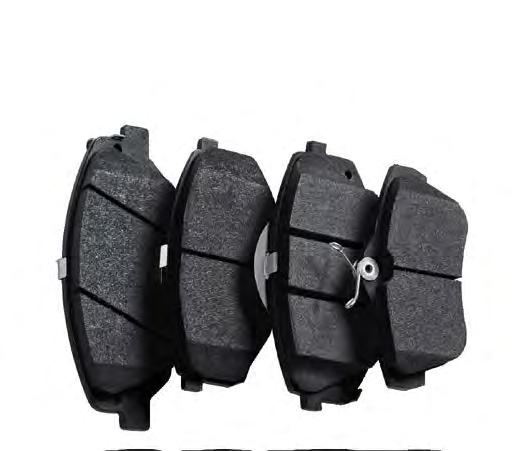

Blue Print Brake Pads
Optimal Safety & Comfort

Blue Print now offers an extensive range over 1,250 brake pads for Asian and European vehicle applications covering over 96% of all popular cars on European roads year 2000 and onwards.
Every Blue Print product is researched, designed and manufactured to be premium OE matching quality and undergoes stringent and regular quality checks to ensure optimum performance & long service life.
Confidence that brakes will fit “Right First Time”
Get more information about our complete offer of braking components at our online catalogue:








